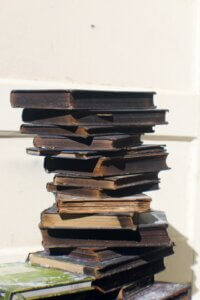How to Handle Soot Removal on Delicate Surfaces
Key Takeaways
- Soot particles are extremely small and can deeply penetrate delicate surfaces, making effective soot removal challenging without the proper techniques.
- Immediate steps following soot deposition should include ventilating the affected area and wearing protective gear to prevent further damage and health risks.
- Specific cleaning techniques vary by material, with vacuuming and dry cleaning sponges recommended for fabrics, and professional consultation suggested for artwork and electronics.
- Preventive measures such as regular maintenance of fireplaces and heating systems, installing smoke detectors, and using air purifiers can minimise future soot damage.
- Understanding the nature of soot and employing appropriate soot removal strategies is crucial for safely restoring delicate items to their original condition, with professional advice recommended when in doubt.
Summary
This article provides a comprehensive guide on handling soot removal on delicate surfaces, detailing the nature of soot, immediate response steps, and specific cleaning techniques for different materials. It emphasises the importance of preventive measures to avoid future soot damage and suggests consulting professionals for sensitive items like artwork and electronics, underscoring the need for careful soot removal to restore items safely to their pre-damage state.

In the aftermath of a fire, the presence of soot on delicate surfaces can be a significant concern. Soot, a byproduct of incomplete combustion, clings stubbornly to virtually every surface it encounters, from the delicate fabrics of your upholstery to the intricate details of artwork. Its acidic nature can cause further damage if not addressed promptly and with the proper techniques. This guide is designed to offer in-depth strategies and advice for effectively managing and removing soot from these sensitive items, ensuring they are restored to their original condition with as little risk of damage as possible.
Understanding Soot and Its Effects on Delicate Surfaces
Soot particles are minuscule, often less than 2.5 micrometres in diameter, allowing them to penetrate deeply into the fibres of fabrics, the pores of paintings, and the intricate carvings of antique wood. This not only makes the soot removal cleaning process challenging but also means that the acidic components of soot can quickly start to degrade these materials. Understanding the composition and behaviour of soot is the first step in formulating an effective cleaning strategy.
Immediate Steps to Take Following Soot Deposition
- Ventilation: Begin by ventilating the affected area to prevent soot particles from settling further into surfaces. Open windows and use fans to circulate air, but avoid directing airflow directly at soot-covered items to prevent pushing soot particles deeper into materials.
- Protective Measures: Before starting the soot removal process, it’s crucial to wear protective gear such as gloves and masks. Soot can be harmful to your health, and its fine particles can easily be inhaled or irritate the skin.
Specific Techniques for Cleaning Delicate Surfaces
- Fabric and Upholstery
- Vacuuming: Carefully vacuum the surface with a high-efficiency particulate air (HEPA) filter vacuum to remove loose soot particles. Avoid using brush attachments which can grind the soot into the fabric.
- Dry Cleaning Sponge: Use a dry cleaning sponge (also known as a soot sponge) to gently blot the affected areas. These sponges are specially designed to absorb soot without pushing it deeper into the fabric.
- Artwork and Paintings
- Professional Assessment: Due to the value and sensitivity of the artwork, consider consulting a professional conservator to assess and possibly clean the piece. Improper soot removal cleaning can irreversibly damage the artwork.
- Wood and Antique Furniture
- Dry Cleaning Methods: Begin with a dry cleaning sponge to remove surface soot. Avoid water or cleaning solutions initially, as they can cause the soot to penetrate deeper into the wood.
- Gentle Cleaning Solutions: If necessary, a mild detergent diluted in water can be used sparingly on a clean, soft cloth to wipe the wood. Always test a small, inconspicuous area first to ensure there is no adverse reaction.
- Electronics and Appliances
- Professional Cleaning: Given the complexity of electronics and the risk of causing further damage, it’s recommended to consult a professional to clean and assess any electronic devices that have been exposed to soot.
Preventive Measures to Protect Delicate Items from Future Soot Damage
- Regular Maintenance of Fireplaces and Heating Systems: Ensure these are cleaned and inspected regularly to minimise soot production.
- Install Smoke Detectors: Early detection of fires can help prevent significant soot deposition.
- Use Air Purifiers: High-quality air purifiers can reduce airborne particles, including soot, in your home.

Regular Maintenance of Fireplaces and Heating Systems: Ensure these are cleaned and inspected regularly to minimise soot production.
Install Smoke Detectors: Early detection of fires can help prevent significant soot deposition.
Use Air Purifiers: High-quality air purifiers can reduce airborne particles, including soot, in your home.
FAQs
-
What is the safest way to remove soot from delicate fabrics?
- The safest method involves gently vacuuming the surface with a HEPA filter vacuum to remove loose soot particles, followed by blotting with a dry cleaning sponge, known as a soot sponge, designed to absorb soot without pushing it deeper into the fabric.
-
Can I clean soot-damaged artwork myself?
- Due to the value and sensitivity of artwork, it’s highly recommended to consult a professional conservator for assessment and cleaning. Improper cleaning can irreversibly damage the artwork.
-
How can I prevent future soot accumulation in my home?
- Regular maintenance of fireplaces and heating systems, installing smoke detectors, and using high-quality air purifiers can significantly minimise the risk of future soot accumulation in your home.
Why Choose Us?
AllAces Cleaning & Restoration has over 35 years of industry experience handling extensive soot removal and fire restoration projects across Brisbane, Sydney, Melbourne and surrounds. Our IICRC-certified technicians are highly trained and experienced utilising the latest technology and equipment to ensure the return of a pre-loss condition.
Trust the experts and contact the team at 1800 00 10 10 today!